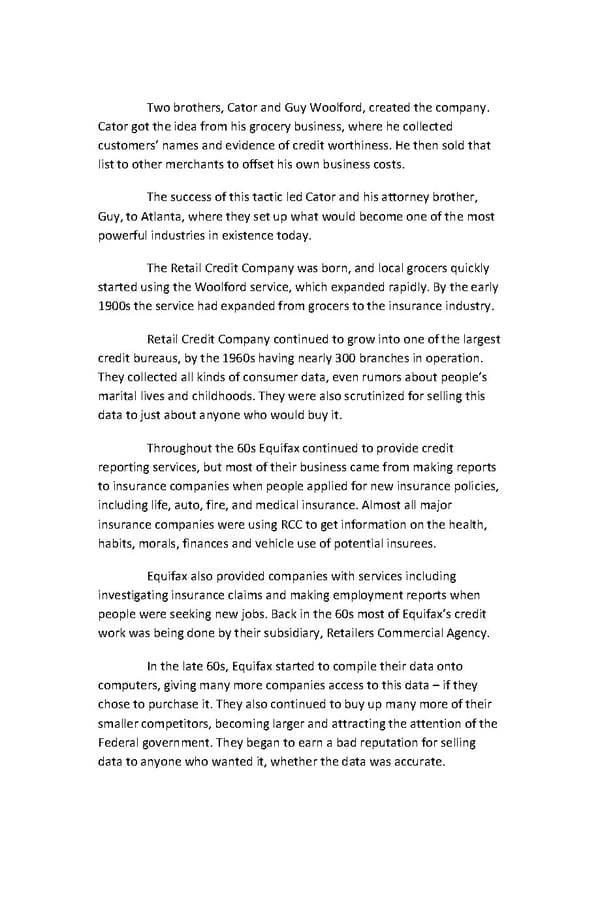Two brothers, Cator and Guy Woolford, created the company. Cator got the idea from his grocery business, where he collected customers’ names and evidence of credit worthiness. He then sold that list to other merchants to offset his own business costs. The success of this tactic led Cator and his attorney brother, Guy, to Atlanta, where they set up what would become one of the most powerful industries in existence today. The Retail Credit Company was born, and local grocers quickly started using the Woolford service, which expanded rapidly. By the early 1900s the service had expanded from grocers to the insurance industry. Retail Credit Company continued to grow into one of the largest credit bureaus, by the 1960s having nearly 300 branches in operation. They collected all kinds of consumer data, even rumors about people’s marital lives and childhoods. They were also scrutinized for selling this data to just about anyone who would buy it. Throughout the 60s Equifax continued to provide credit reporting services, but most of their business came from making reports to insurance companies when people applied for new insurance policies, including life, auto, fire, and medical insurance. Almost all major insurance companies were using RCC to get information on the health, habits, morals, finances and vehicle use of potential insurees. Equifax also provided companies with services including investigating insurance claims and making employment reports when people were seeking new jobs. Back in the 60s most of Equifax’s credit work was being done by their subsidiary, Retailers Commercial Agency. In the late 60s, Equifax started to compile their data onto computers, giving many more companies access to this data – if they chose to purchase it. They also continued to buy up many more of their smaller competitors, becoming larger and attracting the attention of the Federal government. They began to earn a bad reputation for selling data to anyone who wanted it, whether the data was accurate.
 Mastering Business Credit - Preview Page 26 Page 28
Mastering Business Credit - Preview Page 26 Page 28